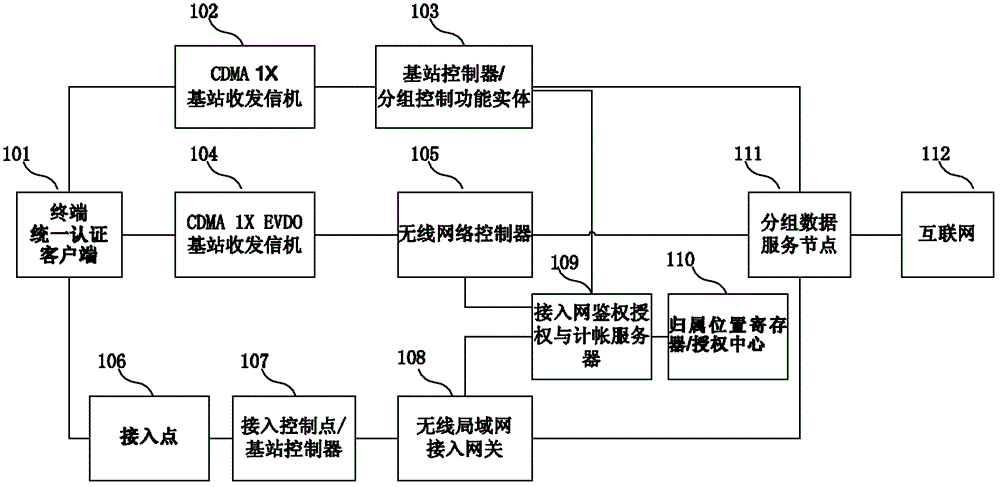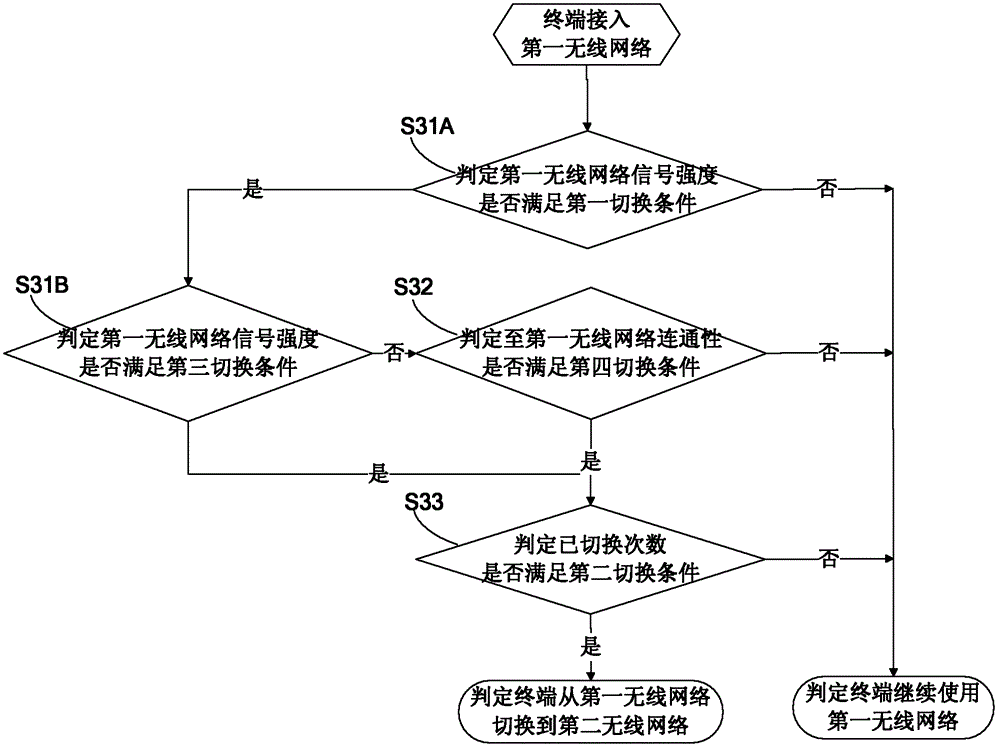Method and device capable of judging whether terminal is switched between two wireless networks
A wireless network and terminal technology, applied in the field of judging whether the terminal switches between two wireless networks, can solve the problem of increasing terminal power consumption
- Summary
- Abstract
- Description
- Claims
- Application Information
AI Technical Summary
Problems solved by technology
Method used
Image
Examples
no. 1 example
[0061] figure 2 It is a schematic flowchart of the first embodiment of the determination method of the present invention. Refer below figure 2 As shown, the specific implementation manner of this embodiment is described in detail.
[0062] First, in step S21A, it is determined whether the signal strength of the first wireless network at the location of the terminal that has accessed the first wireless network satisfies the first handover condition, if the signal strength of the first wireless network does not meet the first handover condition, then It is determined that the terminal continues to communicate through the first wireless network.
[0063] The signal strength of the wireless network is the primary factor reflecting the quality of the wireless link. The wireless network signal is a spatial radio frequency signal, which is easily interfered. Therefore, the signal strength of the wireless network is used as the primary condition for judging whether the In the cas...
no. 2 example
[0072] In the above embodiments, the signal strength of the wireless network is used as the first factor to be judged before handover. However, the wireless channel has a high bit error rate, complex channel fading, and network equipment noise. These factors make the ability of the signal strength to reflect the link quality very limited. By judging the connectivity between the terminal and the wireless network , then it is possible to more accurately determine whether to perform network switching, and to avoid the wireless network after switching being unusable due to factors of wireless network connectivity when the terminal is switching, thereby switching again. see below image 3 As shown, the second embodiment of the method of the present invention is introduced. In this embodiment, the judgment on the connectivity between the terminal and the wireless network will be further increased, and the phenomenon of ping-pong switching between different networks will be further ...
no. 3 example
[0089] Figure 4 It is a schematic flow chart of the third embodiment of the method of the present invention. In this embodiment, the first wireless network may be a wireless local area network, and the second wireless network may be a CDMA 1X network or a CDMA 1X EVDO network. Specifically, the first threshold is A, and the first switching condition is that the average value of the signal strength of the wireless local area network at the location of the terminal within the second time period is smaller than the first threshold A. The third threshold is B, and the third switching condition is that the average value of the signal strength of the wireless local area network at the location of the terminal within the second time period is less than the third threshold B, where B is less than A. The second threshold is D, and the second handover condition is that the number of handovers of the terminal between the wireless local area network and the CDMA network is less than the...
PUM
 Login to View More
Login to View More Abstract
Description
Claims
Application Information
 Login to View More
Login to View More - R&D
- Intellectual Property
- Life Sciences
- Materials
- Tech Scout
- Unparalleled Data Quality
- Higher Quality Content
- 60% Fewer Hallucinations
Browse by: Latest US Patents, China's latest patents, Technical Efficacy Thesaurus, Application Domain, Technology Topic, Popular Technical Reports.
© 2025 PatSnap. All rights reserved.Legal|Privacy policy|Modern Slavery Act Transparency Statement|Sitemap|About US| Contact US: help@patsnap.com



